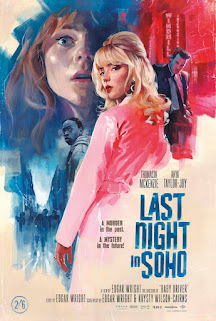Rod Serling, the creator of The Twilight Zone, crafted a memorable holiday tale for that much revered show, as well as another for his later anthology series, Night Gallery. For The Twilight Zone, Serling wrote "The Night of the Meek," which starred Art Carney as a down on his luck department store Santa who gets a chance at redemption. On Night Gallery, Serling combined Christmas and Hanukkah in a thoughtful episode entitled "The Messiah on Mott Street," featuring Tony Roberts, Edward G. Robinson and Yaphet Kotto in a moving tale set in a low rent New York neighborhood, where a dying man (beautifully played by Robinson) has an encounter with an angelic figure (Kotto) who might be an angel, or a harbinger of death. Both episodes are essential viewing for Serling fans.
Serling scripted yet another Yuletide tale, Carol For Another Christmas, an updated version of Charles Dickens' A Christmas Carol, which aired on ABC as a holiday movie special in 1964. The film stars Peter Sellers, Ben Gazzara, Eva Marie Saint and Sterling Hayden, who plays Daniel Grudge, a powerful industrialist and weapons manufacturer who lost his son, Marley, in World War II. Grudge's nephew, Fred, visits and encourages him to use his wealth and power to effect positive change in the world, and to help the US engage in cultural exchanges with other countries.
 |
| Peter Sellers in Carol For Another Christmas |
Grudge feels the US should remain isolated, not get involved with other parts of the world, and also that we should build up our nuclear armaments in order to protect ourselves. Like Scrooge in the Dickens original, Grudge is taken on a mystical journey by three ghostly visitors on Christmas Eve, who show him what the past, present and future of our conflict-driven world has been, is currently, and could be like in the future, if the world continues on its current destructive and warlike path.
Sellers appears in the "Ghost of Christmas Future" segment, as the demagogue-like leader of a post-nuclear war society, who encourages violent conflict and an "us vs. them" philosophy. Also appearing in the film are Robert Shaw, Percy Rodriguez, Pat Hingle, James Shigeta, Steve Lawrence and Britt Ekland, who was married to Sellers at the time. Directed by Joseph L. Mankiewicz, with a score by Henry Mancini, the film received mixed reviews upon its original release, with some critics find it overly preachy and too didactic, while others praised the performances of the cast, including Sellers, Hingle and Lawrence.
Carol for Another Christmas was the first in a series of TV specials initiated by the United Nations. The goal of the series was to educate viewers about the UN's work, in order to gain support for their missions around the world. Only four of the six proposed specials were produced. Carol for Another Christmas aired only once in 1964, and was not shown again until Turner Classic Movies rebroadcast it in 2012. It's since aired annually on TCM in December, though it has never been released on home video. While the film is a bit over the top in delivering its message, it's an interesting entry in Serling's oeuvre. Its offbeat twist on the Dickens original and somewhat downbeat themes set it apart from his more hopeful tales, and the all-star cast and solid direction by Mankiewicz make it worth seeking out.


















